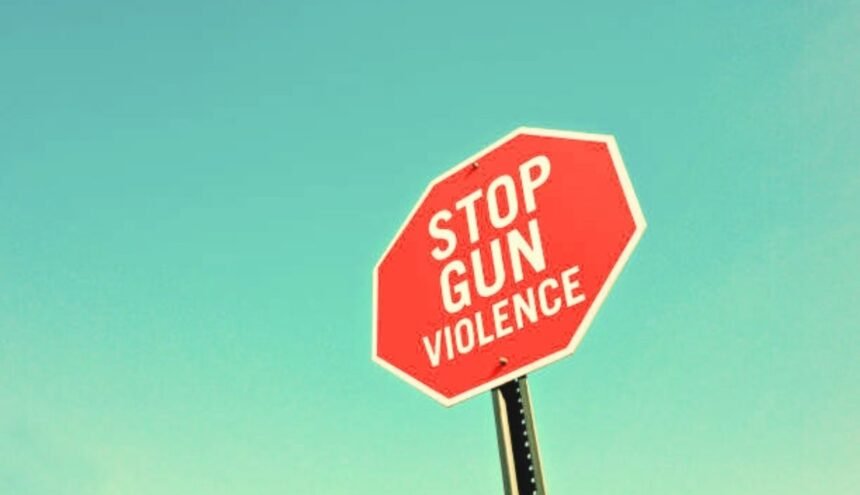A new analysis by the Center for American Progress reveals a stark divide in firearm homicide rates between cities in blue states with strict gun laws and those in red states with lax ones.
The report, provided exclusively to Axios, shows that cities with the highest gun murder rates are overwhelmingly concentrated in Southern red states. This contrasts with the common Republican narrative that progressive policies are to blame for increased urban crime.
Examining Data Across 300 Cities
The Center for American Progress based its conclusions on firearm homicide data from the Gun Violence Archive for the 300 most populous US cities from 2015-2022.
The analysis comes as momentum builds to approach gun violence as a public health epidemic. This includes New Mexico’s controversial use of a public health order to impose a ban on open and concealed carry in certain locations.
Authors See “Two Different Americas”
“We’re really seeing two different Americas when it comes to gun violence,” said Chandler Hall, a senior policy analyst at CAP and author of the report.
“There’s already a lot that cities are trying to do to address gun violence locally…but when they’re hamstrung by state policies and can’t control the flow of guns or how guns are carried in their cities, there’s only so much city officials can do,” he added.
Some blue cities border red states with looser gun laws, further complicating local efforts. Chicago is one example.
Southern Red States Dominate Top Spots
The city with the highest firearm homicide rate in 2022 was St. Louis, followed by Birmingham, AL, New Orleans, Jackson, MS, and Baltimore. On average, blue cities saw 7.2 gun murders per 100,000 residents from 2015-2022. The rate in red cities was 11.1 per 100,000.
While the overall gun homicide rate was higher in Democrat-led blue cities, the report argues comparing them to Republican-led red cities is misleading. Factors like population, poverty, and inequality differ substantially between blue and red cities.
Cities Have Limited Control Over Gun Laws
Experts point out cities typically have little power to enact firearm restrictions beyond what their state allows.
“A lot of cities are bound by state-level policies,” said Dan Semenza, an assistant professor at Rutgers University. “There’s often little wiggle room for cities to go far beyond the policies that states have on the books.”
Semenza, who was not involved in the CAP analysis, said research shows background checks and permitting paired with safe storage laws can reduce gun deaths. In contrast, expanded concealed carry heightens the risk.
“It’s about population-level risk,” he said. “It goes up when more guns are available.”
A Wide Gap in Blue vs. Red States
The average firearm homicide rate from 2015-2022 was 7.2 per 100,000 in blue state cities compared to 11.1 in red state cities, a striking gap.
St. Louis, MO had the highest rate in 2022 at 49.4 per 100,000 residents. The other cities in the top five were Birmingham, AL (32.8), New Orleans, LA (32.3), Jackson, MS (27.9), and Baltimore, MD (26.5).
All are located in Southern states with less restrictive gun laws like Alabama, Louisiana, and Mississippi. Missouri also has relatively permissive firearms statutes compared to other blue states.
Meanwhile, cities in states like California, New York, and Massachusetts with strict gun control measures tended to have lower rates of gun murders.
Easy Gun Access Drives Violence
The CAP analysis argues loose state gun laws allow firearms to flow freely, inevitably winding up in the hands of criminals and fueling violence in cities.
Tighter restrictions on concealed carry, safe storage, and purchasing appear to reduce hazardous gun exposure at the population level. But cities in red states lack the authority to go beyond state laws to enact these life-saving policies.
“It’s about opportunities and risk, and it goes up when more guns are available,” said Semenza. “It’s not about individual intent.”
Public Health Approach Gaining Steam
In 2022, New Mexico permitted cities and counties to impose temporary bans on open and concealed carry of guns in public buildings and open spaces. Officials cited gun violence as a public health crisis.
Some public health experts endorse framing shootings as a contagious epidemic driven by gun exposure and availability. This approach focuses on population-level risk reduction rather than individual blame.
But these novel public health interventions face intense political and legal challenges, especially in Southern red states.
The CAP report bolsters the case that easy access to firearms, not progressive policies, drives urban gun violence. But changing state laws remains an uphill battle in much of the country.



